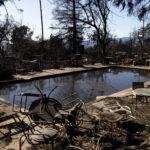Property/casualty industry prior-year loss reserves developed favorably for eight straight calendar years as of year-end 2013, according to a new report from Fitch Ratings, which also says the industry reserve position remains adequate overall.
Only the workers compensation, commercial automobile liability and commercial multiple peril lines show signs of deficiency based on Fitch’s analysis of year-end 2013 reserve levels.
For all lines taken together, reserve takedowns for accident years 2012 and prior during calendar-year 2013 shaved 2.3 points off the calendar-year 2012 industry loss ratio. During calendar-year 2012, the figure was roughly the same, while the comparable figure was 3.0 points in calendar-year 2011. These figures all exclude the effects of losses emerging from mortgage and credit crisis-related claims in the mortgage and financial guaranty lines.
Overall, Fitch estimates that year-end 2013 reserves for losses and loss adjustment expenses related to the last 10 accident years (2004-2013) were between $4.1 billion and $17.3 billion redundant based on an analysis of data contained in Schedule P of statutory financial statements.
In addition, Fitch estimates reserve deficiencies for asbestos, environmental using a survival ratio approach (total reserves divided by three-year average paid losses with a target level of between 11x and 14x for asbestos and 8x and 10x for environmental). Including asbestos, environment and other latent exposures, the range of reserve adequacy extends from $12.5 billion redundant to $11.8 billion deficient. Expressed as a percentage of total held reserves, this corresponds to roughly 2.0 percent redundant at the low end to 2.0 percent deficient at the high end.
The Fitch report notes that in recent years, an increasing number of U.S. insurer opted to purchase reinsurance coverage to reduce uncertainty tied to asbestos and environmental claims without specifically identifying the insurers.
Fitch’s reserve adequacy estimate breakdown is as follows:
• Accident Years 2004−2013/all lines: $4.1 billion−$17.3 billion redundant.
• Asbestos exposures: $1.4 billion−$8.0 billion deficient.
• Environmental losses: $1.4 billion−$2.0 billion deficient.
• Other latent exposures: $2.0 billion−$5.0 billion deficient.
Citing examples such as lead paint, pharmaceuticals, climate change litigation and nanotechnology, Fitch says its estimate for “other latent exposures,” while “unscientific,” is based on the belief that the industry does not fare well in its ability to predict new major latent loss exposures—making it likely that prior underwriting years will develop unfavorably.
Providing more insight into line-by-line reserves for accident years 2004-2013, the Fitch report includes charts of paid-to-incurred ratios and IBNR-to-incurred ratios, (incurred-but-not-reported-to incurred losses). For most lines, these charts reveal a decreasing level of conservatism with respect to recent soft market accident years 2008-2011. In other words, the paid-to-incurred ratios are higher for these accident years than for the hard market years, 2004-2007, and IBNR-to-incurred ratios are lower.
Fitch notes that the other liability-occurrence line is an exception, which shows conservatism in the soft market years of 2008-2011.
Also, for both workers comp and other liability-occurrence, the accident-year 2012 and 2013 paid-to-incurred ratios are lower (more conservative from a reserving standpoint) than accident-year 2011. But the most recent workers comp paid-to-incurred ratios are still higher than the comparable ratios (at same stages of development) for the hard market 2004-2007 accident years.
Overall, even though Fitch’s most pessimistic industrywide loss deficiency estimate is roughly 2.0 percent of total reserves, the Fitch report includes stress test results at 10 percent and 25 percent deficiencies, concluding that the industry capital position could sustain these more significant deficiencies.





















 Update: LA Wildfire Insurance-Loss Estimates Approach $40 Billion
Update: LA Wildfire Insurance-Loss Estimates Approach $40 Billion  Palisades Fire Litigation: Suit Alleges LA Utility Mismanaged Water Supply
Palisades Fire Litigation: Suit Alleges LA Utility Mismanaged Water Supply  Smoke, Coverage Issues Cloud Wildfire Forecast: $35-$45B Losses Insured
Smoke, Coverage Issues Cloud Wildfire Forecast: $35-$45B Losses Insured  Significant But ‘Manageable’ Insurance Losses Expected From LA Fires: S&P
Significant But ‘Manageable’ Insurance Losses Expected From LA Fires: S&P 



